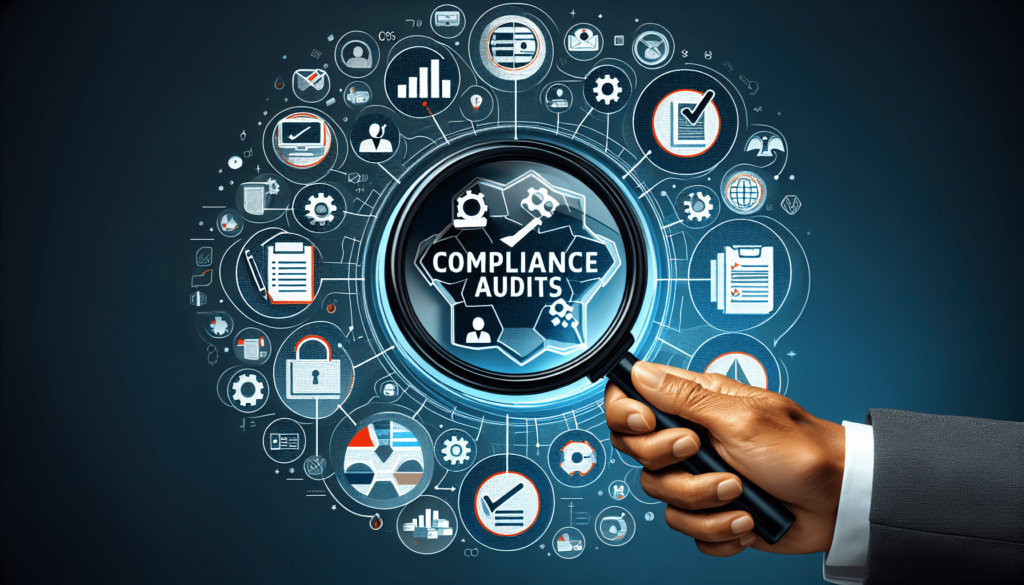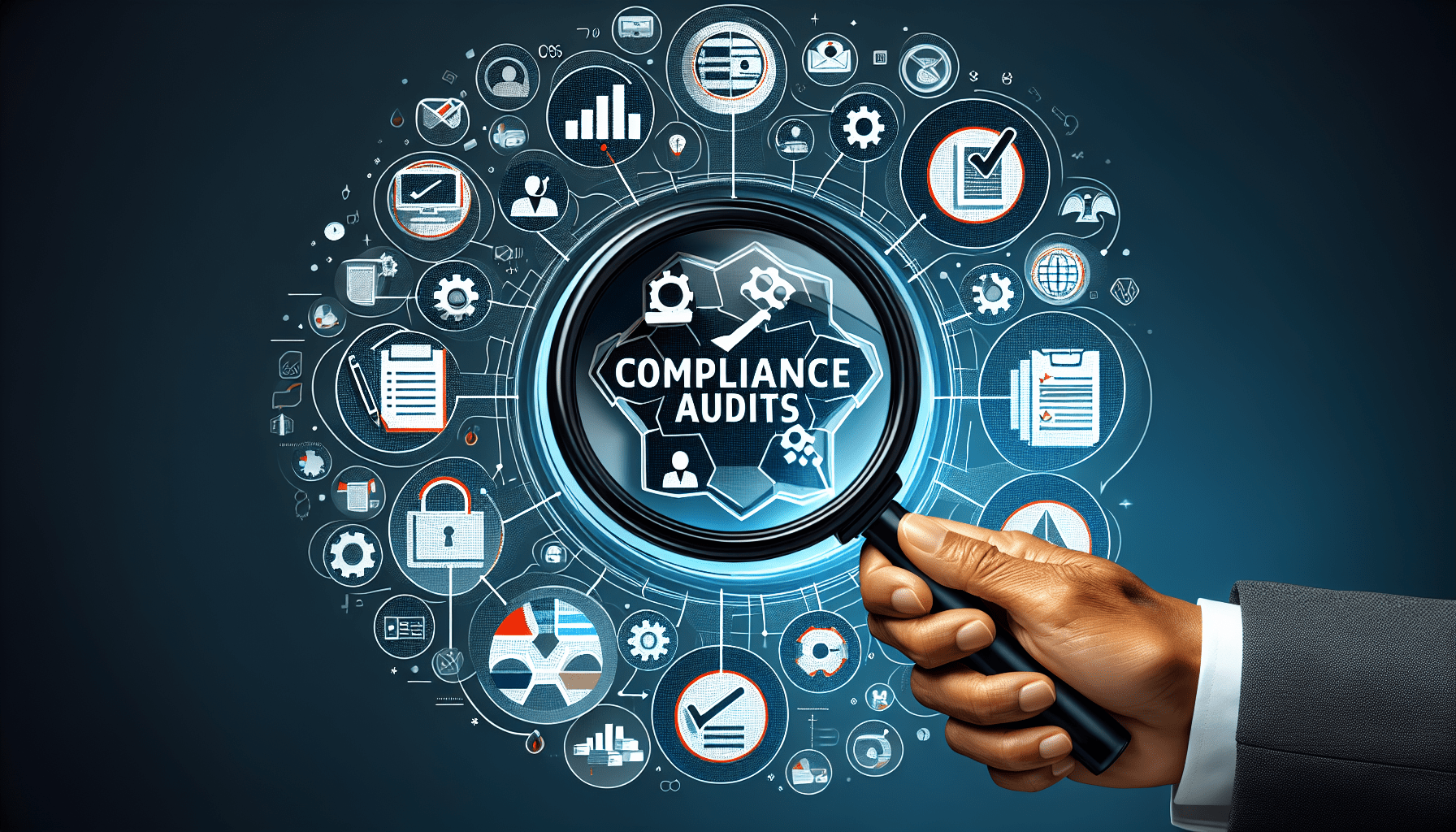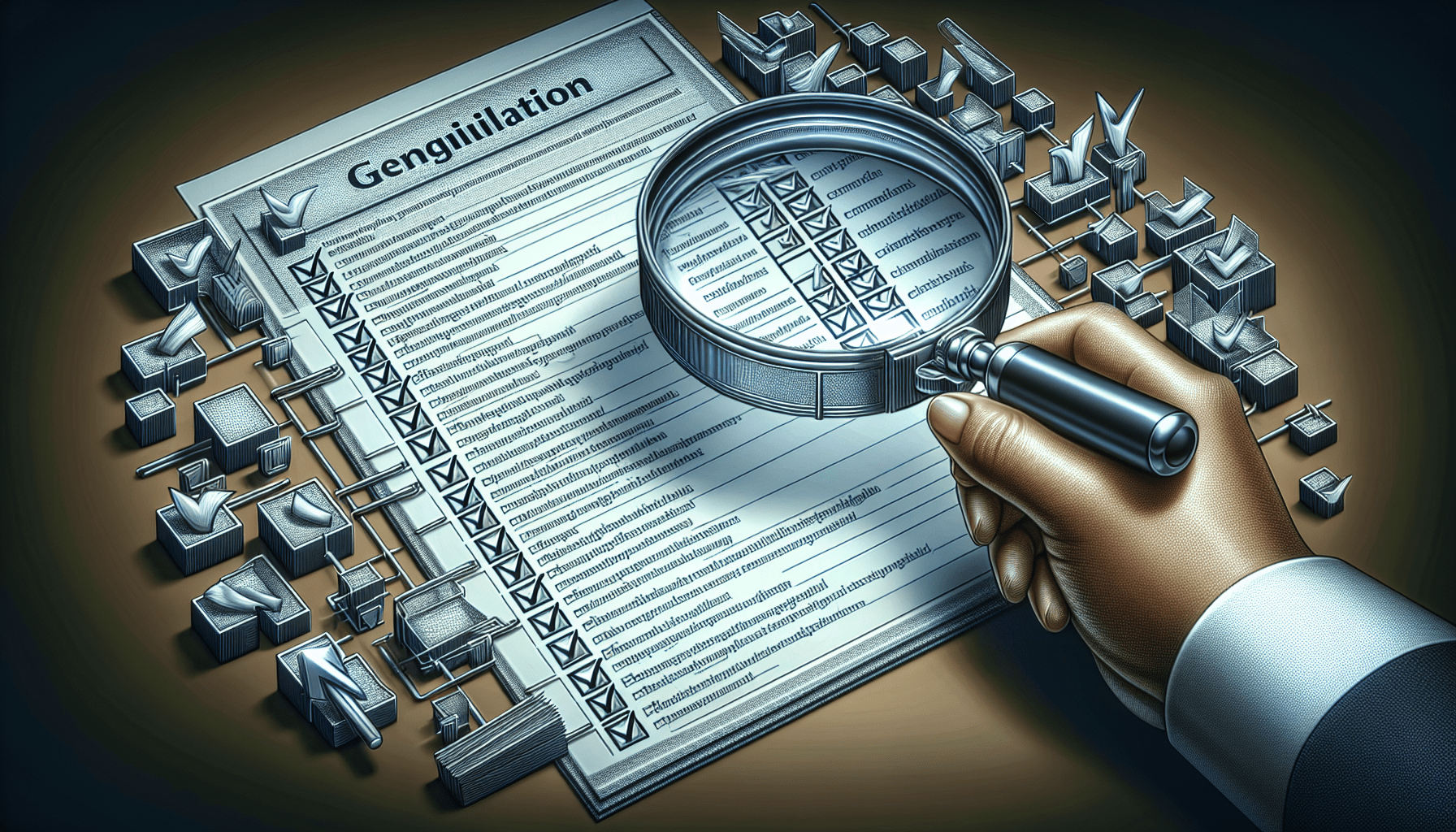In today’s ever-evolving business landscape, upholding accountability and maintaining compliance with regulations has become crucial. To ensure organizations meet their legal and ethical obligations, compliance audits have emerged as invaluable tools. These audits serve as a means to assess an organization’s adherence to industry standards, laws, and policies, ultimately minimizing risks and promoting transparency. By thoroughly reviewing internal processes, documentation, and practices, compliance audits proactively identify areas of improvement, allowing businesses to address potential issues before they escalate. In this article, you will explore the significance of compliance audits in fostering accountability within organizations and the various benefits they bring to the table.
The Importance of Compliance Audits
Compliance audits play a crucial role in ensuring accountability within organizations. By systematically reviewing and assessing an organization’s adherence to laws, regulations, policies, and procedures, compliance audits help identify areas of non-compliance and enable the implementation of corrective measures. This article will explore the definition of compliance audits, their role in ensuring accountability, the benefits of conducting compliance audits, the principles guiding their execution, the steps involved in conducting compliance audits, common findings, the role of technology in compliance audits, best practices for conducting compliance audits, challenges and limitations, the consequences of non-compliance found in audits, and strategies for building a culture of compliance and accountability.
Definition of Compliance Audits
Compliance audits can be defined as systematic reviews and assessments conducted to determine an organization’s conformity with applicable laws, regulations, policies, and procedures. They involve evaluating the effectiveness of control systems in place, detecting areas of non-compliance, and recommending corrective actions. Compliance audits can be conducted internally by the organization’s own audit function or externally by independent auditors.
Role in Ensuring Accountability
Compliance audits play a crucial role in ensuring accountability within organizations. They provide an objective assessment of an organization’s compliance with laws, regulations, and internal policies, thereby promoting transparency and ethical conduct. By identifying areas of non-compliance and recommending corrective actions, compliance audits hold individuals and departments accountable for their actions and provide a basis for enforcing disciplinary measures when necessary.

Benefits of Conducting Compliance Audits
Conducting compliance audits brings several benefits to organizations. Firstly, they help identify potential risks and vulnerabilities, enabling the implementation of controls to mitigate these risks effectively. Compliance audits also enhance the organization’s reputation by demonstrating its commitment to ethical conduct and regulatory compliance. Moreover, compliance audits can help prevent and detect fraud, reducing financial losses to the organization. Finally, compliance audits foster a culture of accountability within the organization by ensuring that all individuals and departments adhere to established policies and procedures.
Principles of Conducting Compliance Audits
To ensure the effectiveness and integrity of compliance audits, several principles should guide their execution. These principles include independence and objectivity, comprehensiveness, a systematic approach, risk-based focus, and documenting findings.
Independence and Objectivity
Compliance audits should be conducted by individuals or teams who are independent and free from any conflicts of interest. Independence ensures that the audit function remains unbiased and enables auditors to objectively assess the organization’s compliance efforts.
Comprehensiveness
Compliance audits should cover all relevant areas of an organization, including its operations, processes, and policies. A comprehensive audit ensures that no stone is left unturned and helps detect any potential areas of non-compliance.
Systematic Approach
Compliance audits should be conducted following a systematic approach that includes planning, execution, and reporting stages. A structured and disciplined approach helps ensure consistency and thoroughness in the audit process.
Risk-Based Focus
Compliance audits should prioritize areas of higher risk. By focusing on high-risk areas, auditors can allocate their resources effectively and identify the most critical areas of non-compliance.
Documenting Findings
All audit findings should be adequately documented to provide evidence and support for the audit conclusions. Proper documentation ensures transparency, facilitates the communication of findings, and serves as a historical reference for future audits.
Steps in Conducting Compliance Audits
Conducting compliance audits involves several key steps that ensure a comprehensive evaluation of an organization’s compliance efforts.
Planning and Scoping
The first step in conducting a compliance audit is planning and scoping. This involves identifying the objectives of the audit, determining the scope and timeframe, and allocating resources. During this stage, auditors gather information about the organization’s structure, policies, and relevant laws and regulations.
Gathering and Analyzing Information
The next step is gathering and analyzing information. Auditors collect data through interviews, document reviews, and data analytics. They assess the adequacy and effectiveness of the organization’s internal controls and evaluate the level of compliance with applicable laws and regulations.
Identifying Areas of Non-Compliance
Based on the information gathered, auditors identify areas of non-compliance. This may include instances of non-compliance with laws, regulations, or internal policies and procedures. By identifying these areas, auditors can recommend measures to address the non-compliance and mitigate associated risks.
Evaluating Control Systems
Auditors evaluate the effectiveness of control systems in place to ensure compliance. This includes assessing the design and implementation of control activities, identifying any gaps or weaknesses, and recommending improvements to enhance the organization’s control environment.
Reporting and Communication
The final step involves reporting and communication. Auditors prepare a comprehensive report detailing the audit findings, including areas of non-compliance, control weaknesses, and recommendations for corrective actions. This report is communicated to relevant stakeholders, including senior management, the board of directors, and other governing bodies.

Common Compliance Audit Findings
During compliance audits, auditors often encounter common findings that are indicative of non-compliance or control weaknesses within organizations. These findings include:
Lack of Documented Policies and Procedures
One common finding is the absence of documented policies and procedures or their inadequate communication and implementation. Clear and well-communicated policies and procedures are essential for guiding employees and ensuring consistency in compliance efforts.
Non-Compliance with Laws and Regulations
Auditors frequently uncover instances where organizations fail to comply with applicable laws and regulations. This can have serious legal and financial consequences for the organization and may result in penalties, fines, and reputational damage.
Inadequate Internal Controls
Inadequate internal controls can lead to increased risks of non-compliance. Auditors often find control weaknesses such as insufficient segregation of duties, lack of authorization controls, or ineffective monitoring procedures.
Insufficient Training and Awareness
A lack of training and awareness among employees is another common finding in compliance audits. When employees are not adequately trained on compliance requirements and the importance of adherence, the risk of non-compliance increases.
Failure to Monitor and Enforce Compliance
Auditors often find that organizations have established compliance programs and controls but fail to actively monitor and enforce compliance. Without regular monitoring and enforcement, compliance efforts may be rendered ineffective.
The Role of Technology in Compliance Audits
Technology plays a vital role in enhancing the effectiveness and efficiency of compliance audits. By leveraging technology, organizations can automate audit processes, utilize data analytics to identify risks, monitor and detect non-compliance, and integrate compliance systems for seamless operations.
Automation of Audit Processes
Technology enables the automation of audit processes, reducing the manual effort required and ensuring consistency and accuracy. Audit management software can streamline the planning, execution, and reporting stages, allowing auditors to focus on value-adding activities.
Data Analytics in Identifying Risks
With the exponential growth of data, auditors can leverage data analytics tools to analyze large volumes of information and identify patterns or anomalies indicative of risks or non-compliance. Data analytics enables auditors to gain insights into the organization’s operations and identify potential areas of concern more efficiently.
Monitoring and Detecting Non-Compliance
Technology allows organizations to implement monitoring tools and automated controls to detect non-compliance in real-time. Continuous monitoring helps identify deviations from established controls and alerts management to potential risks or non-compliance before they escalate.
Integration with Other Compliance Systems
Technology facilitates the integration of compliance systems, such as risk management, policy management, and incident reporting. Integrating these systems enables organizations to streamline their compliance efforts, share data seamlessly, and improve overall compliance management.
Best Practices for Conducting Compliance Audits
To ensure the effectiveness of compliance audits, organizations should follow best practices that promote a comprehensive and robust audit process.
Establishing Clear Audit Objectives
Clear audit objectives should be established at the beginning of each compliance audit. These objectives should be aligned with the organization’s overall compliance goals and provide a roadmap for conducting the audit.
Engaging Knowledgeable and Independent Auditors
Audit teams should consist of competent and experienced professionals with a deep understanding of relevant laws, regulations, and industry standards. Independence of auditors should also be maintained to ensure unbiased assessment and reporting.
Maintaining Confidentiality and Impartiality
Auditors should maintain strict confidentiality and impartiality throughout the audit process. This ensures that sensitive information is protected and that auditors’ judgments are not influenced by personal relationships or biases.
Regularly Reviewing and Updating Audit Programs
Audit programs should be regularly reviewed and updated to ensure they remain relevant and effective. Changes in laws, regulations, or organizational processes should be considered when updating the audit programs to maintain their efficacy.
Challenges and Limitations of Compliance Audits
Despite their importance, compliance audits face certain challenges and limitations that organizations should be aware of.
Limited Scope and Sample Size
Due to resource constraints, compliance audits often have a limited scope and sample size. While auditors aim to cover the most critical areas, there may be instances where relevant areas are not fully assessed, increasing the risk of undiscovered non-compliance.
Reliance on Self-Reporting and Documentation
Compliance audits rely heavily on self-reporting and documentation provided by the organization being audited. This reliance introduces the possibility of intentional or unintentional misstatements or omissions, potentially compromising the accuracy and reliability of the audit findings.
Risk of Manipulation or Fraud
In some cases, individuals or departments may attempt to manipulate or defraud auditors to hide non-compliance. This risk underscores the importance of maintaining independence in the audit function and implementing effective controls to mitigate fraud risks.
Resistance from Non-Compliant Individuals or Departments
Non-compliant individuals or departments may resist or obstruct the compliance audit process. This can hinder the auditors’ ability to gather complete and accurate information, making it challenging to identify and address areas of non-compliance effectively.
Consequences of Non-Compliance Found in Audits
Non-compliance found through compliance audits can have serious consequences for organizations. These consequences may include:
Legal Penalties and Fines
Non-compliance with laws and regulations identified in audits can result in significant legal penalties and fines. These financial consequences can have a severe impact on an organization’s bottom line and its ability to operate effectively.
Reputational Damage
Non-compliance can damage an organization’s reputation, eroding stakeholder trust and confidence. This can lead to a loss of customers, business opportunities, and partnerships, further impacting the organization’s financial standing and long-term viability.
Loss of Business Opportunities
Non-compliance can result in the loss of business opportunities. Organizations may be disqualified from participating in government contracts, partnerships, or other lucrative agreements due to their failure to meet compliance requirements.
Weakened Internal Controls
Non-compliance can undermine an organization’s internal controls. When non-compliant practices exist, it indicates a breakdown in the control environment, potentially leading to further control weaknesses and increased risks.
Diminished Stakeholder Trust
Non-compliance found in audits can erode stakeholder trust, including investors, employees, customers, and regulators. Diminished trust can have long-lasting consequences and may require significant efforts to rebuild.
Building a Culture of Compliance and Accountability
To foster a culture of compliance and accountability, organizations should adopt certain strategies and practices.
Leadership Commitment and Tone from the Top
Leadership commitment to compliance and accountability is critical for establishing a culture that values adherence to laws, regulations, and internal policies. Leaders should set the tone from the top by demonstrating their commitment to ethical conduct and ensuring that compliance is a priority.
Effective Communication and Training
Regular communication and training on compliance expectations, laws, regulations, and policies are essential for building a culture of compliance. This includes providing employees with the necessary resources and support to understand and meet compliance requirements.
Rewards and Recognition for Compliance
Rewarding and recognizing employees for demonstrating compliance and ethical behavior reinforces the importance of adherence and creates positive incentives for compliance.
Whistleblower Protection and Reporting Mechanisms
Whistleblower protection and reporting mechanisms should be established to encourage the reporting of potential non-compliance. Employees should feel safe to come forward with concerns or suspicions without fear of retaliation.
Conclusion
Compliance audits are vital tools for ensuring accountability within organizations. They provide an objective assessment of an organization’s compliance efforts, identify areas of non-compliance and control weaknesses, and enable the implementation of corrective measures. By following the principles of independence, comprehensiveness, systematic approach, risk-based focus, and documenting findings, organizations can conduct effective compliance audits. Despite facing challenges and limitations, compliance audits bring numerous benefits, such as risk mitigation, reputation enhancement, fraud prevention, and fostering a culture of compliance and accountability. By incorporating technology, following best practices, and addressing the consequences of non-compliance, organizations can further strengthen their compliance programs and ensure a robust framework for ethical conduct and regulatory adherence.



